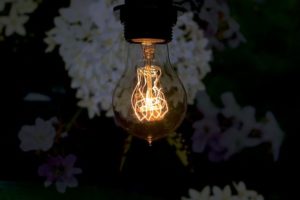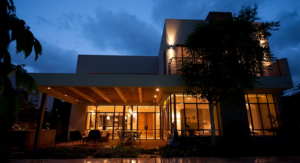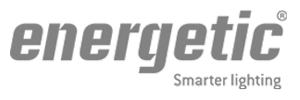
Making the switch to energy-efficient lighting is a no-brainer for most companies. Once the monthly savings are calculated and the ROI is determined, most owners and mangers have little problem committing to a full LED retrofit.
But replacing a commercial lighting system is not always an easy process. In order to maintain the safety, productivity, and aesthetics of the workplace, it is necessary to choose fixtures and bulbs that will match (or improve) the existing lighting scheme.
In this blog, we’re going to review a few helpful tips on how to choose the best lumen output for your commercial or industrial LED upgrade.
Understanding Design Lumens & Mean Lumens
When designing a commercial lighting scheme, the amount of illumination is based on a concept called design lumens, AKA mean lumens. This is a common term that is usually shared in the product spec sheep of the lamp or fixture being installed.
As opposed to the initial lumens, which is the amount of light being produced on day one, design lumens measure the light output at 40% of a lamp’s rated life. This allows designers and building owners to account for the inevitable loss of brightness caused by multiple years of operation.
As an example: an existing commercial lighting fixture is capable of producing 25,000 lumens. This is the amount of light that will occur only during the first 6 months to year of operation. After that, the lumens will start to slowly degrade. So the same 25,000 lumen light that you started out with is only producing 17,000 lumens … a significant reduction.
When replacing a commercial lighting system with energy efficient LED, be sure to check the mean lumens of the products that you’re interested in, and use this number to match your current lighting conditions.
Factoring In LED Measured Life
The “shelf life” of traditional lighting fixtures has always been measured by the amount of hours it takes for 50% of the bulbs to burn out. In other words, if you install a new halide lighting system and half the bulbs are burned out after 10,000 hours, then 10,000 hours is your shelf life.
LED lighting handles source life a bit differently. The source life of an LED uses L70, a measurement of the number of hours it takes for the bulb’s initial lumen output to drop to 70%. Anything below 70% of initial lumen output becomes noticeably darker, and can change the lighting conditions of your workspace considerably.
Choosing the Right Lumen Output for Your LED Retrofit
Upgrading to LED is an easy decision to make, but getting the details right can require some careful research and attention. Be sure to know the lumen output, overall efficiency, and L70 shelf life of any fixtures or bulbs you are considering. Factor in your facility’s ambient temperatures, and seek out performance data for systems operating at those temperatures.
Remember: getting the most out of your LED upgrade starts with purchasing quality components. If an LED fixture or lamp seems surprisingly underpriced, it is likely made with components that will reduce your efficiency and ROI by a noticeable amount.


 Apartment Lighting
Apartment Lighting Area Lighting
Area Lighting Automotive Lighting
Automotive Lighting Building Wall Pack Lighting
Building Wall Pack Lighting Canopy Lighting
Canopy Lighting High & Low Bay Lighting
High & Low Bay Lighting Industrial Lighting
Industrial Lighting Parking Lots & Garages
Parking Lots & Garages Pathway Lighting
Pathway Lighting Retail Lighting
Retail Lighting Stairwell Lighting
Stairwell Lighting























